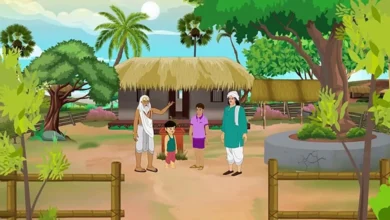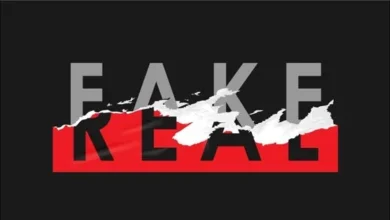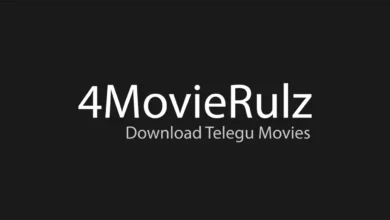Grant County Scanner Freaks: Inside the Community of Local Audio & Dispatch Monitoring

In the modern age of social media, citizen journalism, and real-time public safety awareness, a number of local groups have taken on roles of disseminating live dispatch audio, incident alerts, and local news—often by listening to public radio feeds. One such group is Grant County Scanner Freaks, operating in Grant County, Indiana. This article explores who they are, how they function, their audience, the benefits and risks, controversies, and their evolving role in community awareness.
What Is Grant County Scanner Freaks? Origins & Mission
Grant County Scanner Freaks is a community group based in Grant County, Indiana whose members record, monitor, and publicly share emergency dispatch calls, local incidents, and community alerts in real time or near-real time.
The group describes itself as a volunteer team that posts what is happening throughout Grant County and surrounding areas by listening to live radio or scanner feeds.
On their Facebook page, the group reaches tens of thousands of followers, and they also maintain a presence on X (formerly Twitter) under the handle @GrantCountySF.
Their mission appears to be one of informing the public swiftly about emergencies, unusual events, accidents, road closures, and local disturbances—essentially acting as a local situational awareness hub.
How Grant County Scanner Freaks Operates: Tools & Methods
To share real-time or near-real-time content, Grant County Scanner Freaks uses a mix of technology, listening practices, and content curation.
Live Scanner & Radio Feeds
-
The group taps into public safety radio frequencies (police, fire, EMS) often broadcast via platforms like Broadcastify, which hosts Grant County, Indiana live audio feeds for law, fire, and emergency services.
-
They monitor these transmissions—either through direct hardware scanners or software-defined radio (SDR) systems—and listen for notable incidents.
Selection & Curation
-
Not every dispatch call is shared. The group generally posts calls or events considered noteworthy: serious accidents, crimes, large-scale emergencies, or anything of public interest.
-
They may clip audio, transcribe relevant segments, or accompany posts with descriptions, images, or commentary.
Social Media Posting & Alerts
-
Their Facebook page is a central conduit: posts about new incidents, requests for help, public safety notes, or recording snippets appear frequently.
-
On X, they share timely updates such as school delays or incidents in progress. For instance, they have posted about 2-hour school delays being enacted in the region.
-
Occasionally, they share more sensational content, such as alleged UFO sightings or mysterious events recorded over scanner channels.
Community Engagement & Feedback
-
Followers can comment, share their local knowledge, or flag errors. This feedback loop helps the group refine what content to post and how.
-
At times, they rely on community members to convert audio, locate visuals, or validate information.
Through this layered approach, Grant County Scanner Freaks combines real-time listening with social dissemination to become a local alert mechanism.
What They Share: Typical Content & Examples
Grant County Scanner Freaks’ content falls into several recurring categories:
Emergencies & Incidents
-
Traffic accidents, fires, injuries, medical calls are frequent posts, often with location, context, and dispatch audio.
-
Example: The group has posted on Grant County Police live feed activity, giving followers insight into ongoing calls
School Delays & Community Alerts
-
They disseminate announcements such as school delays, closures, or emergencies in the educational domain.
-
Local residents rely on them to get early notice of disruptions.
Unusual & Sensational Events
-
The group has shared UFO or aerial sighting claims, for instance posting a video captioned “strange UFO earlier” with discussion and converted audio.
-
They have also posted narrative dramatizations (“sighting!”, “prayers going out”) to attract attention.
Obituaries, Memorials & Public Safety Notices
-
Occasionally, tragic events or memorials (“Prayers going out to the family”) are shared to alert the community.
-
Safety warnings, missing persons, or lost property alerts may also appear.
Routine Posts & Updates
-
Daily or periodic updates may include non-emergency content: neighborhood disturbances, traffic warnings, or small fires.
-
They may share weather alerts or information tied to regional safety agencies.
This variety helps Grant County Scanner Freaks remain relevant to a broad local audience, though the focus rests on public safety and incident reporting.
Benefits, Value & Audience Appeal
Why do people follow or rely on groups like Grant County Scanner Freaks? Here are some of their core strengths:
Timely & Informative Alerts
-
In emergencies, every minute counts. The group’s prompt postings give residents early warnings or situational awareness.
-
Official agencies may be slower or constrained by formal channels; citizen groups can act swiftly.
Localized Relevance
-
The content is specific to Grant County and nearby areas, focusing on what affects those communities most.
-
Followers likely live in or near the area and appreciate relevant information about their neighborhoods.
Transparency & Accountability
-
By posting dispatch audio or original source material, the group provides a window into public safety operations.
-
Such transparency can help citizens understand how law enforcement and emergency services work.
Community Cohesion & Participation
-
Residents can discuss, validate, or add context to incidents. This builds local engagement.
-
The group becomes part of the fabric of community reporting—neighbors alert neighbors.
Free Access
-
All posts are publicly accessible (through their Facebook page or X), with no subscription fees.
-
For those curious or concerned about local events, this is an accessible resource.
These benefits help explain why the group enjoys significant engagement and maintained popularity in their region.
Challenges, Risks & Ethical Considerations
However, the operations of a scanner-sharing group come with inherent challenges and moral considerations.
Legal & Privacy Boundaries
-
While many public safety frequencies are legally open to listeners, sharing or distributing certain dispatch content may run into privacy, confidentiality, or regulation issues depending on jurisdiction.
-
Sensitive calls involving minors, medical privacy, or ongoing investigations may require discretion.
Misinformation & Errors
-
Dispatch calls may be misinterpreted, or partial audio could mislead listeners. If posts lack context, rumors may spread.
-
Without editorial oversight, posting errors or incorrect locations is possible.
Ethical Concerns
-
Broadcasting traumatic events may inadvertently exploit victims or distress families.
-
Sensational posts (e.g. UFO claims) can dilute serious reporting and reduce group credibility.
Moderator Burden & Liability
-
Constant moderation is needed to remove inappropriate content, correct mistakes, and manage user response.
-
In some cases, posting certain content might expose the group or administrators to liability if laws or policies around emergency data sharing are violated.
Public Trust & Reputation
-
If the group misreports, sensationalizes incidents, or prioritizes traffic over accuracy, it loses trust.
-
The tension between “speed vs verification” is real—delays allow fact-checking, but speed garners attention.
Careful protocols, disclaimers, and community standards are vital for upholding credibility and minimizing harm.
The Future of Grant County Scanner Freaks & Citizen Dispatch Journalism
Where might this group go next, and how could its role evolve in an era of increasing scrutiny of information flows? Here are possible trajectories and strategies.
Enhanced Content Verification
-
Implementing checks: cross-referencing dispatch data with public records, law enforcement statements, or user-submitted confirmations.
-
Using disclaimers to clarify when content is preliminary, unverified, or speculative.
Structured Platforms & Archives
-
Developing a website or platform to host archived posts, searchable logs of incidents, and categorized content.
-
Offering a map interface to plot incidents by location (with privacy safeguards).
Partnerships with Local Agencies
-
Collaborating with fire departments, police, or EMS to gain authorization or official dispatch feeds could improve accuracy and legitimacy.
-
Joint arrangements might allow sanitized or delayed feeds for public consumption.
Monetization & Sustainability
-
Though sensitive, voluntary donations or sponsorships (local businesses) might help support moderator time, infrastructure, or servers.
-
Care must be taken to avoid conflicts of interest—no monetization that compromises content integrity.
Community Training & Education
-
Educating followers about the limitations of scanner data, misinterpretation risk, and ways to responsibly share awareness.
-
Hosting workshops or guides on media literacy, local safety, or civic engagement.
Expansion to Neighboring Regions
-
The group might gradually widen coverage to nearby counties, offering the same model of incident sharing while retaining localized focus.
-
Alternatively, spin-offs or similar groups may emerge in neighboring jurisdictions.
By pursuing these improvements, Grant County Scanner Freaks could strengthen its role as a civic resource—not just a sensational feed.
Conclusion
Grant County Scanner Freaks occupies a niche at the intersection of public safety, community reporting, and citizen journalism in Grant County, Indiana. By listening to dispatch feeds, curating incident reports, and posting them on social media, the group offers residents timely insight into local emergencies, school alerts, and unusual events.
While the benefits are clear—speed, local relevance, accessibility—there are serious responsibilities and ethical questions. Correct interpretation, respect for privacy, moderation, and trust are essential. As the digital information landscape evolves, the group’s potential to serve as a legitimate community resource will depend on how well it balances transparency with responsibility.




